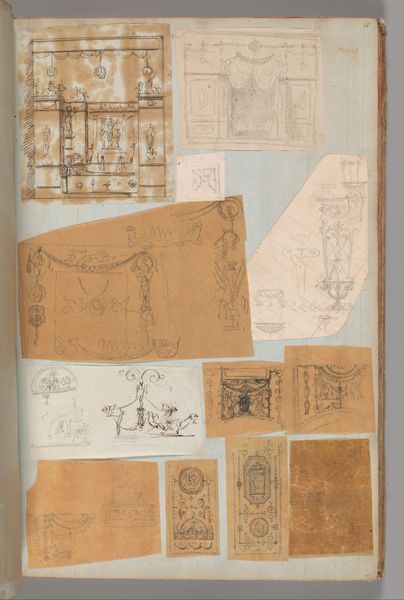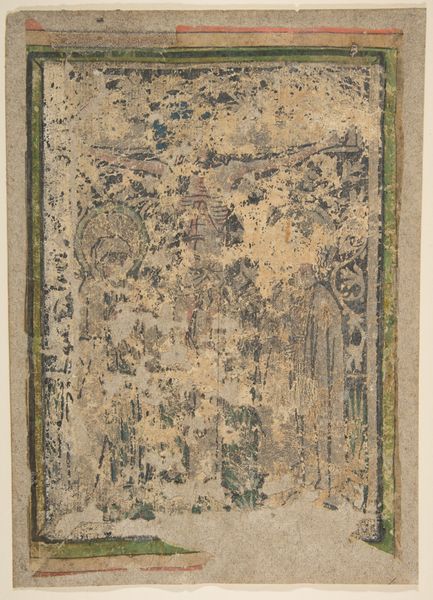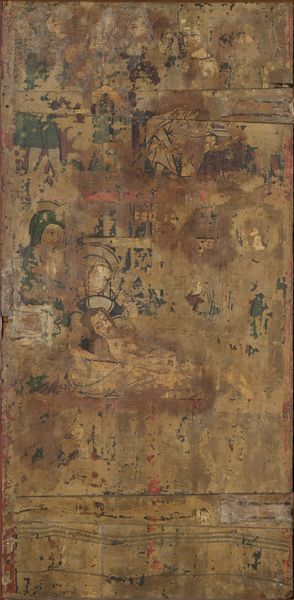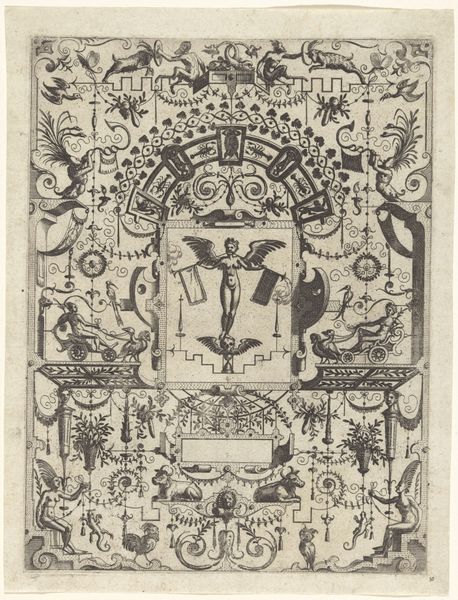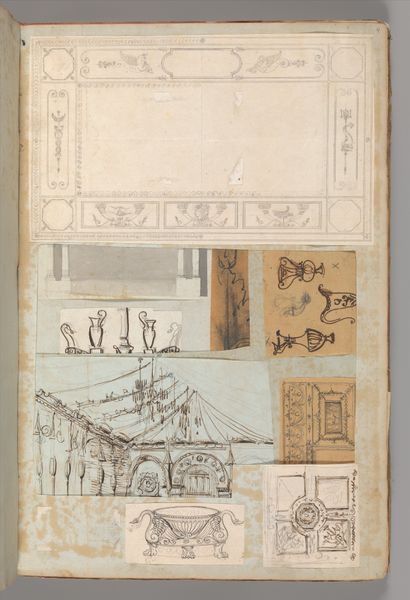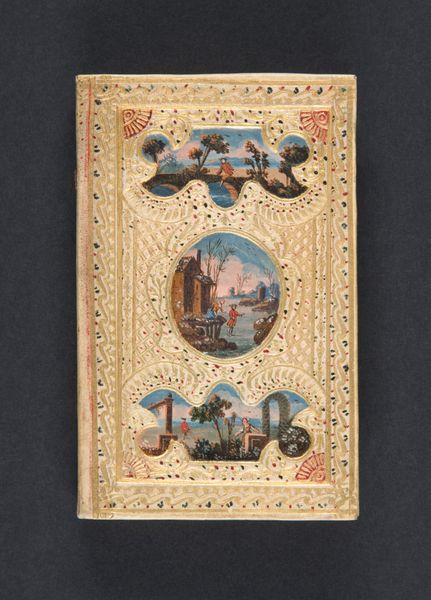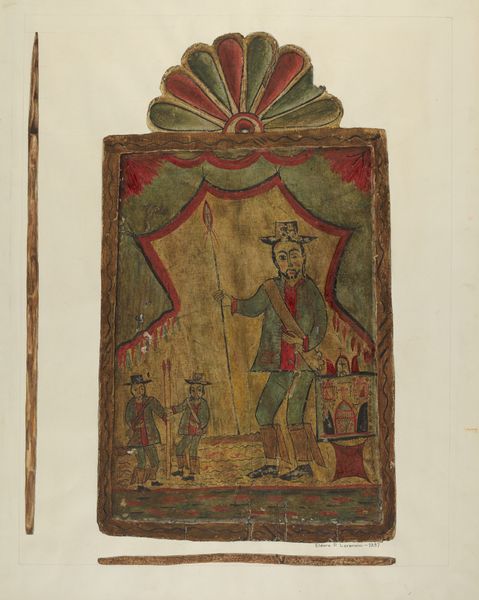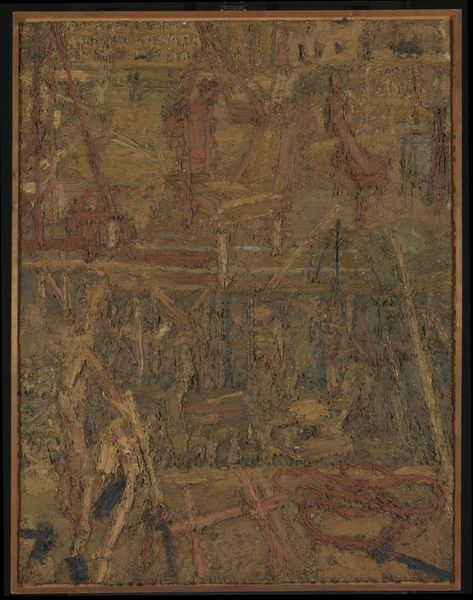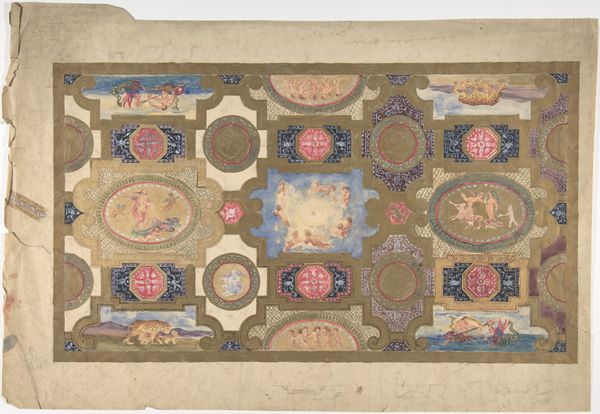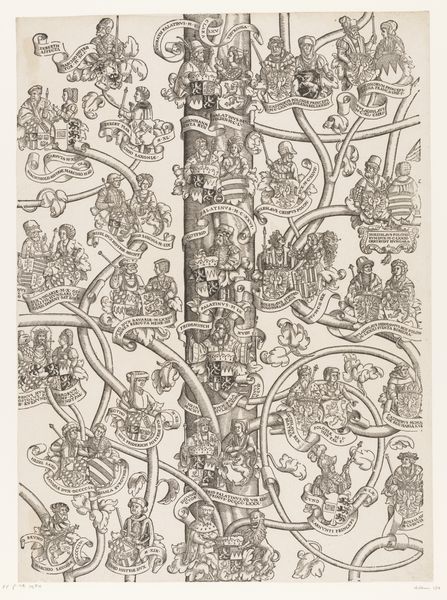
drawing, coloured-pencil, tempera, fresco, watercolor, architecture
#
portrait
#
drawing
#
neoclacissism
#
coloured-pencil
#
allegory
#
tempera
#
landscape
#
fresco
#
11_renaissance
#
watercolor
#
coloured pencil
#
geometric
#
architecture
Dimensions: 6-3/4 x 11-1/4 in (17.1 x 29.8 cm)
Copyright: Public Domain
Editor: Here we have "Design for a Ceiling Decoration," dating from somewhere between 1800 and 1900, housed here at the Met. Looking at the tempera and watercolor, there's a real sense of… grandiosity. What's your read on it? Curator: Well, considering its intended location, the ceiling, grandeur seems appropriate. But let’s think about this beyond just aesthetic intention. This is more than just art, it is a product meant to be placed in architecture for a patron. It’s colored pencil, tempera and watercolor on paper– relatively accessible and common materials in its time. I see it speaking to the economics of the era. Do you see that here? Editor: I hadn’t thought about it that way, but I suppose the choice of those particular media would have been less expensive than, say, commissioning a fresco directly onto the ceiling itself. Is that what you mean? It's about money? Curator: Not only money, but the division of labor. Here, it's an anonymous design, almost like a template. Someone designs this, another crafts the ceiling... where's the "artist" in that traditional sense? It blurs those old Renaissance notions of the singular artistic genius. What is also compelling is thinking about who "Anonymous" might have been - the role they played. Editor: That’s fascinating. So instead of focusing on, say, the allegorical figures and neoclassical style, we’re considering this as a commodity? An artifact of a production process? Curator: Exactly. This drawing is a tangible record of design, patronage, production. How was value assigned, negotiated, materialized? And how does this impact our understanding of artistic value, writ large? This goes against much that traditional art history has told us about the canon. Editor: This really changes how I see these kinds of preliminary drawings. I'll definitely look at preparatory sketches in a different light moving forward. Curator: Indeed! Questioning traditional notions around how art gets made or its consumption might open up the aperture on other perspectives of artistic merit.
Comments
No comments
Be the first to comment and join the conversation on the ultimate creative platform.
